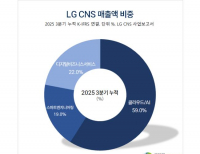Financial Markets and Interest Rates
* Federal funds rate – the rate paid on overnight loans made from one US bank to another. It is a sensitive rate and indicative of the amount of liquidity in the economy.
* Three features of a bond that determine the interest rate:
1. The maturity of the loan
2. The likelihood of default
3. The tax status on the loan’s interest income
* Treasury bills mature in less than one year and pay no coupon payments
* Treasury notes mature between one and ten years and make coupon payments
* Treasury bonds mature in more than ten years and make coupon payments
* Municipal bonds are long-term debt obligations of local governments. Generally not subject to income tax.
* Commercial paper – short term (< 1 year) bonds issued by large firms
* Corporate bonds – long term bonds issued by large firms
* Mortgages – bonds to finance construction of new buildings
· Fixed rate – monthly payments do not vary
· Adjustable rate – monthly payments fluctuate based on the interest rates on short-term government bonds
* Term structure of interest rates
– the relationship between interest rates on bonds with similar characteristics and the maturity of those bonds.Primary markets
– markets for the exchange of new issues of financial instrumentsSecondary markets
– markets for previously issued bonds & stocks.
i = (R - Pb) / Pb
i = interest rate
R = prinriple of the bond, to be paid at maturity
Pb = the price of the bond today
Thus, increases in the interest rate reduce the current price of the bond.
* Types of unemployment:
· Cyclical unemployment – due to a deficiency of aggregate demand
· Frictional unemployment – due to imperfect information, job search, frictions in the economy
· Structural unemployment –due to structural changes in the economy, workers no longer fit (e.g. blacksmiths in today’s world of automobiles)
* Natural rate of unemployment – even in a booming economy, there is always a certain % of people looking for a job. When the economy is at or below the natural rate of unemployment, an increase in demand will result in higher prices (for the US, this is about 5%). In the 1990s, unemployment got down to 4% but no inflation. This was because of increased productivity and outsourced labor (see the “To Boldly Go” article.
* Index of leading indicators:
· Yield curve
· Durable backorders
· Consumer sentiment – from the U. of Michigan survey:
o Consumer durables can be predicted fairly well from consumer sentiment
o Captures a lot of what is going on in the economy.Interest rates:
· Money rates – short term rates; near rate
· Prime rate – rate banks give their best customers
· Discount rate – rate the Fed charges member banks; only rate the Fed actually sets
· Federal funds rate – interest rates for overnight bank-to-bank loansWhat determines interest rates:
· Term to maturity of loan
· Probability of and conditions for default
o Pledge collateral
o Quality of assets· Tax status
· Tax status
※출처를 밝히면 자유롭게 인용 가능합니다.

